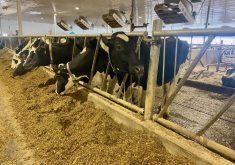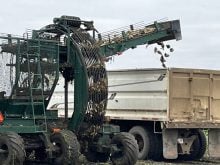Prairie farm women agree with the findings of a National Farmers Union study.
They are all busy.
“In my community I do see that,” Karen Gordon said May 8 from her snowed-under cattle and grain farm near Hanna, Alta.
“On our farm we have a hired couple. I do already work outside a lot. I don’t find that unusual at all. It’s hard to find manpower.”
Her neighbour, Susan Suntjens, who gathers information about hours of work for Statistics Canada, said she has seen a trend developing for the past 10 years for women’s work. But she thinks more women work at off-farm jobs than on-farm chores.
Read Also

Accurate accounting, inventory records are important
Maintaining detailed accounting and inventory records is not just a best practice; it’s a critical component of financial health, operational efficiency and compliance with programs like AgriStability.
Suntjens said her two sons don’t find the farm financially viable with its high costs and low prices and the fact that the land needs to pay for their parents’ retirement. That reality is further weighed down by two years of drought.
“I’ve been here 37 years and last year was the first time we didn’t have one bale,” Suntjens said. “The only thing that saved us was the provincial acreage grant.”
Manitoba Women’s Institute director Marlene Baskerville of Winnipeg agreed family members are taking on more work to support the farm because of the lack of cash flow to hire labour.
As for young people wanting to farm, she said her own three children found that the “prohibitive costs” meant they couldn’t farm, so the land was sold. However, that may not be true for all Manitoba families, she added, pointing to a provincial program designed to help young people start farming.
“If you look at the statistics, by and large most farms are family owned and operated. Some think that the trend will be corporate farms. At this point the statistics don’t bear this out.”
Women’s and men’s roles are blurring, said Maureen Clay from her farm near McTaggart, Sask. However, she wonders how women could get credit for the variety of work they do.
“I don’t know how you’d recognize that, cutting your grass versus feeding the cattle.”
She agreed that an attitude shift has occurred.
“It is a generational thing. Our mothers didn’t have their names on the land title. Now everybody contributes and is recognized.”
The next generation in agriculture will be different, the women agree.
Gordon said many parents are discouraging their children from farming. She said the lifestyle has changed – “work stops Friday and starts Monday. You can’t stop farming on the weekend.”
Gordon also wondered how agriculture will bear the costs of federal directives on food safety and environmental plans.
Suntjens said farming today is more a way of life, “because if you were in it for the money, it wouldn’t pay for the time you put in.”
Suntjens said she used to worry more about the farm when she was younger, but now she lets life happen. She laughs in recounting the reaction last summer when she put up portable fences to protect her 100 tomato plants and fruit trees from pests. She was trying to keep out deer, but the neighbours joshed that it was for grasshoppers.














